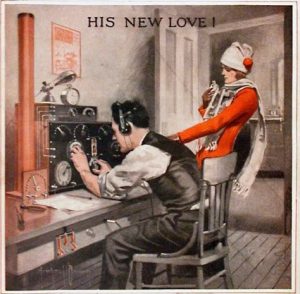The History of W1BST and LRRA
History of W1BST and LRRA. George “Pete” Hall WA1APL spoke to the Lakes Region Repeater Association at its dinner meeting on September 26, 1998. In his remarks Pete described the early work of establishing a two-meter FM repeater that would regularly serve Lake Winnipesaukee and the surrounding area. Here Pete shares with us the notes he used as he addressed the group.
[Ed.Note: I’ve added a few headings throughout the text. Otherwise, the material is unchanged from the original.]
Beginnings of the history of W1BST and LRRA
I would like to thank Tom Bates (AA1NZ) and Dan Morgan (W1UR) for inviting me here today to talk with you about the first days of the LRRA and some of the events that evolved.
From 2-Meter AM to FM
Back in the Late 1950’s and early 1960’s, there was a group in the Lakes region that held regular roundtable transmissions on a daily basis using 2 meter AM transmission. This activity became popular, as near as I can tell, by the availability of the Benton Harbor Lunch Boxes manufactured in kit form by HeathKit, Inc. For roughly $50 you could get on two meters. There were no repeaters in those days so anyone on two meters sported some form of beam antenna. Polarization was horizontal so there was relatively no mobile operation on two meters. It wasn’t until the 1970’s that HAM FM repeaters were introduced to the area. The most successful was probably the Concord Repeater under the sponsorship of Ted Everett. Most of the Lakes Region Hams who had 2 meter FM equipment monitored the Concord Repeater at that time.
Conditions of the time – Difficult to get licensed – FCC Requirements – Technology limited.
Saddleback Repeater – Tom Vinton (K1CEU), a technician, had a drive to build repeaters. He was probably the most knowledgeable person in the area regarding the technical requirements of the then current Repeater technology. If there was a mountain top available, Tom wanted to put a repeater there.
Doc Steady W1BST- History of W1BST and LRRA
I personally got involved with 2 meter FM and repeaters through my acquaintance with Tom. Fred (Bing) Miller(W1IIQ) had been a long time friend of mine and he was very active with the Lakes Region Hams on the Concord Repeater and through working Bing I made acquaintances with Doc Steady and his crew. I also worked the Saddleback repeater with Tom, in fact Tom and I both worked for NHN and saw each other almost on a daily basis. Eventually we all got together and Tom heard Doc speculating on a “someday Lakes Region Repeater”. This fit right into Tom’s agenda, and I, as the middleman, became somewhat of a liaison.
The LRRA History
It wasn’t long before a meeting was set up between Doc’s crew and Bing, Tom and I. As Tom lived in Dover, we chose middle ground and met in Wolfeboro. Doc and ?, and maybe Pete Steady, all came to Wolfeboro in Doc’s boat and met with Bing, Tom and I at the town docks. We held our meeting right there on a park bench and decided to organize the “Lakes Region Repeater Association”. Doc pledged to advance the association the necessary funds to get started until we could build a membership and set up a dues schedule. The meeting took no more than a half-hour as I remember.
Cotton Mountain – History of W1BST and LRRA
Needless to say, the membership grew to over twenty member’s overnight. A technical committee made up of Tom, myself, Bing and Bob? (WA1KVW) were selected. Bob was a natural choice as he lived on top of Cotton Mountain, which had a view of almost the entire Lake Winnepesaukee. Needless to say, he also offered his residence and tower as a host site for the repeater. It was decided early on, that a very low power repeater would be constructed. It was felt that with the terrain, as it was in the area, restricted the coverage potential pretty much to the local area around the lake. Low power would (1) be adequate for the area and (2) would eliminate many problems, particularly that of de-sensing the repeater receiver. At this point in time, we planned to use two antennas, one for receiving and one for transmitting. This was before the days that duplexers were readily available. Tests were conducted and it seemed that everyone in the Lakes Region could work Bob at his QTH. There were a few dead spots, but all in all, the coverage seemed to be satisfactory.
From Modified Motorolas to HeathKits
Most repeaters at this point in time were made out of modified commercial two-way radios. Old Motorola and GE 2-Way radios (boat anchors) were very scarce even though most of the tube type gear was being replaced with the new transistor equipment by the public service organizations. The Concord, Saddleback, and Derry Repeaters all used this type of gear. There was no lack of information on how to modify the gear. Practically every issue of QST or CQ magazines carried “how to” articles. At this point in time, there were a lot of operators and few repeaters. The “baby drake”, TR22, one of the more popular ham rigs in use at this time, and because of its low cost (less than $200.00) and six receive and transmit xtal controlled channels and rechargeable nicads, made repeater operation readily available. Heathkit had a very popular rig also.
Early Repeater Licensing and the FCC History
Up until this point in time, the FCC was very wary of repeaters. They did not have clear cut rules and were very cautious about giving out repeater licenses. The monitoring requirements by the license holder were very ambiguous and it seemed that every license holder had their own idea regarding them. Some insisted that there had to be someone sitting by a switch and ready to turn the repeater off if a perceived usage was not exactly within the guidelines that they thought to be good amateur practice. Most hams agreed that in order to license a repeater one had to present to the FCC a broadcast license type of presentation. The Saddleback repeater license application consisted of over 50 pages and included propagation studies, graphs, along with detailed descriptions of equipment, antennas, etc. It took weeks of work and considerable amount of technical expertise to prepare one of these applications. At the time the Lakes Region Repeater Association was about to submit a license application, it was generally accepted that this was the route that had to be taken. It was also pretty much the rule that it took about 3 to 6 months to have an application acted upon by the FCC.
License Application – History of W1BST and LRRA
I was the one elected to prepare and submit the application for a license for the Lakes Region Repeater Association. It was agreed that Bob (WA1KVW) would be the designated license holder as the repeater was to be located at his residence. Fred (Bing) Miller(W1IIQ) and myself (WA1APL) were to be designated as control stations. That meant that Bing and I, along with Bob, were the ones to pull the switch if we were to accept the more radical interpretation of the almost non-existent rules and regulations of the FCC. Actually, we didn’t think too much about control at this point, as we were sure the repeater would take about six months to get licensed. This was the average time frame so far.
Enter the ARRL
The ARRL was very much aware of the consternation among the hams and the lack of any realistic guidelines governing all aspects of the relations between the Hams and the FCC. Unknown to us at this time, the ARRL had a man in Washington at this exact time, to discuss the licensing and control requirements for repeaters. Fortunately, of the many repeaters around the country, there had been very few complications and they seem be working very responsibly. The gentleman from the ARRL and the FCC discussed simplified license applications for repeaters but no action had been taken. They even drew up a possible application, which was based on both the ARRL and FCC input. This application was for study by both the ARRL and the FCC. Somehow, and I don’t recall how, we got wind of this meeting. I called the ARRL and happened to get a hold of the gentleman who had just returned from Washington. He hadn’t even opened his briefcase as yet, but he told me about his experience in Washington and said that the FCC was very receptive to him and his ideas. He told me about the application form they had put together and that it was all very tentative, but suggested as an experiment, why didn’t we try using it. He said he would send me a copy and that I could make reference to the meeting in Washington. A couple days later I received from the ARRL a very abbreviated application form less than one page long. I filled it out, with a cover letter of explanation, and mailed it to the FCC. Two weeks later I got a call from Bob and he told me he just received a repeater license in the name of the LRRA. Needless to say, the next month, I think every Ham publication in the Country had an article about the license that the LRRA got in two weeks. The day we got the license, I called the ARRL and reported to them, and they were astounded and elated. This apparently ended the folderol of repeater license applications.
Building the First LRRA Repeater History
Now we were in a dilemma. We had a repeater license but no repeater. We fully expected that we had at least six months to get it all together. We knew we wanted to go low power (1 or 2 watts), we had a Tower to put two antenna’s up, but we hadn’t made any decisions regarding what actual equipment we wanted to use. At the time, there was a company over in NY state called VHF Engineering that put out a line of kits for 2-Meter transmitters and receivers. Tom had built a couple of these units and they appeared to work quite well. They were inexpensive, so if we couldn’t get them to work together using dual antennas as a repeater, it wouldn’t be a financial disaster. We ordered a transmitter and a receiver. I think the total cost was less than $100.00. Tom went to work putting it together. He was super at this type of activity and when he finished, it looked like a commercial rig. We were fortunate, as both Tom and I worked for the NHN; we had good picking from a great deal of discarded commercial equipment and some of the best test gear around. We also had Charlie Tamm as our chief engineer and boss, who was a devoted ham, and who I believe became a member of the LRRA.
Antenna Up, and Running
Now we had a location, and a repeater, but we didn’t as yet have nor had we decided upon an antenna pair for the repeater. Andy Nuttle(), a member of the association came to our rescue. Andy owned the GAM Antenna Co. in Manchester, where he manufactured his antennas in an old abandoned mill (which subsequently burned down). His antennas were popular with the Hams around the country and several cities used them for their police communications. The popular television series of the day, “Hawaii 50” sported GAM antennas on their police cars. Andy had a base station antenna design, which he said he could make up for us and donate to the club. Sure enough, he came through with a pair of antennas and he even helped us mount them on the tower. That evening, we got on the air and surprisingly; we had very little desensitizing, which was the plague of dual antenna repeater installations. Before we finished that night, I bet we had twenty people sign on. If memory serves me correct, I believe Doc Steady was the first station to call in.
WR1ADX Begins with the First Beep History
There was a lot of activity at this time. All of the existing repeaters were busy most of the time. WR1ADX (LRRA Call sign) was no exception. Even though it was only one watt, there must have been 35 or 40 regulars on and there was seldom a time when you couldn’t raise someone. Keeping in mind that the existence of repeaters, and all of ham radio, for that matter, was to provide service in an emergency. There were no cell phones at this time, so there was an obvious need for some kind of reliable mobile communications. This fed the popularity of repeaters and their support and provided a challenge to all of the hams using the repeater. In my experience, hams are very much aware of this responsibility, and were generally on the lookout for someone who might be in trouble on the roadside and need help. Hardly a day went by when there wasn’t at least one “911” call by one of the hams on the repeater. In order of facilitate this emergency need, the “beep” was introduced. As far as I know, this repeater was the first in the country to have this feature. In practice, when an operator turns over transmission to another operator, there is a tail on the repeater when it is released before the repeater drops out. There were timers built into the control systems of repeaters that timed out a transmission if someone was too long winded or captured the repeater before the tail dropped out. Very few operators can say they never timed out a repeater. If one came back on a transmission too quickly, the timer would not reset and subsequently the time left would be the accumulated time between the previous transmission and the current one. Timers were usually set around two minutes, which was long enough for a single transmission but rarely long enough for two transmissions. By setting the timer a few seconds into the tail, this forced a period of time for someone with an emergency, or for that matter someone to break in for any reason. Operators quickly learned that this was borrowed time and if they wanted to make a transmission, such as in a round table, they had better wait until the timer was reset. The beep indicated the resetting of the timer. To my knowledge, this feature was first introduced on this repeater. It is a feature that has been copied throughout the country. In fact, the control system, which was designed and built by the technical committee, was replicated and used in several other computers throughout New England.
Duplexers
Whenever a repeater operates on two antennas, there is always a discrepancy. There are spots that you can hear the repeater but can’t get in, or you can get in but you can’t hear the repeater. Also, though we were pleased with the operation of our one watt repeater, it soon became obvious that it really didn’t serve the mobile operators very well, as there were many dead spots throughout the region. After a couple of months, we had pretty much decided that we should up the power. We also decided that we should get a hold of a duplexer and go to a single antenna. The repeater was easy. Standard Communications had come out with a very nice package of a self-contained ten watt repeater. We had a good healthy membership and had no trouble raising the funds to purchase the Standard Repeater.
Duplexers were another problem. There were no commercial duplexers available in the market at this time for ham repeaters. There were commercial duplexers out there but the cost was prohibitive. Tom Vinton had a friend in Vermont that had built a duplexer which was installed on the Mt. Ascutney repeater and worked quite well. This was a four-cavity duplexer called a hybrid ring configuration. Tom’s friend provided us with instructions on how to build one and we proceeded to scrounge around for materials. What would we use for the cavities? When Tom first went to work for the New Hampshire Network, he was the transmitter operator at the Network Hanover Station. Apparently, when the station was first constructed, a section of hard line transmission tubing, six inch copper tubing with a center conductor, was damaged. The installers just left the damaged hard line out in the woods near the tower. This would be perfect material for building the cavities. Charlie Tamm told us we could have it. We salvaged enough material to make two complete duplexers of four cavities, each approximately 2 ½ feet tall. One set went to the Saddleback repeater, which was Tom’s repeater, and we got the other set. Bing Miller (W1IIQ) was instrumental in doing the precision machine work, Doc Steady’s son was instrumental in acquiring some very special rod material that had an almost zero expansion/contraction characteristic for the tuning rods and in a matter of a few weeks we were in business. They were not easy to tune. We were fortunate that we had the use of a very fine spectrum analyzer and some super test equipment complements of Channel 11. They worked beautifully. We were amazed that we had absolutely zero de-sensing.
A Tower and a Shed
Shortly after the completion of the duplexes, we learned that Bob Thomas, our host, was going to be moving out of the area. Don MacBeth, who lived in the same area as Bob, with an equally desirable site, offered us the opportunity to put the repeater at his residence. This meant we had to find a tower and some sort of a building to house the repeater. Again, through the generosity of many members of the association, we were able to assemble about sixty feet of Rohn tower. We also purchased a tool shed that was very adequate for our needs. A couple of Saturdays and all kinds of assistance from the membership, we were able to install the shack, equipment, raise the tower, run electrical power, and get on the air.
Tech’s Call Sign and a Laconia Site History
It wasn’t long after this that the FCC changed it licensing requirements and repeaters used the call signs of the tech that maintained them. Also, my work assignments changed, and I became unavailable to help out on the tech committee. Roughly around this time, a decision was made to move the repeater again, this time to the Laconia area, where some tech people were more readily available. Also, the majority of the membership was from the Laconia area, and moving the repeater there would definitely serve the majority of the membership better. I was not involved at all at this time, but the repeater was successfully moved and remained in that area for some time.
Recollections from Dan Morgan W1UR History of W1BST and LRRA
The Weirs South was the next location in Laconia, NH. It was a very high tower.
After a while the repeater moved to Wolfeboro, NH off Rt 109 on Forest Road. It was located in the house of W1EMN. Eventually his wife wanted the repeater moved from their home.
The next move was to Governor’s Island in Moultonboro, NH. It operated out of a closet in the home of Dick Patten W1NBL. The power was limited and serviced the area only around the lake.
In 1996 Frank Hammond W1WU had recently sold 145.31 repeater and offered the club free space on his tower on Bennett Hill to expand the coverage. It was the first time a tone was put on it because of the new higher location. At the time W1WU was raising the Rohn 25 tower 40 feet to 120 feet and placed the 147.03 antennae at about 100 feet. In 2014-15 the tower was replaced with a 120 foot mono-pole and eventually the club’s 3 repeaters were placed on the top of the tower.
It is currently still located on Bennett Hill, Ossipee, NH.
Recollections from Bob Tiffany W1GWU
I read the history of the repeater with interest.
I knew Tom Vinton very well – he worked at Channel 11 transmitter site – I worked for the Rockingham Sheriff and our transmitters were located there also.
The Saddleback repeater actually had one of those dreaded 50 page application calls. The call was WR1AGN. Repeaters of that vintage were assigned WR calls and licensed separately. They required a dedicated control station. Tom asked me to be that station since he was not able to monitor the repeater while working.
Attached is a scan of those licenses for general interest.
Bob Tiffany W1GWU
Does anyone remember The 3864 Irregulars?
Recollections from Dave Robitaille N1EOK
The irregulars were a bunch of older hams that used to get on 3.864
mhz at 5:30 am weekdays Monday thru Friday about 15 or 20 years
ago. They were from NH and surrounding states. I’m sure a lot of them
are silent keys now. K1NDA is one of the calls I remember from the
group. There were also a group of guys that used to get on 3.970mhz
every afternoon around 2 or 3 pm up around Mass and NH.
CLUB LOGO
Richard Brook KJ1O designed the LRRA logo and was officially voted in as the club logo.
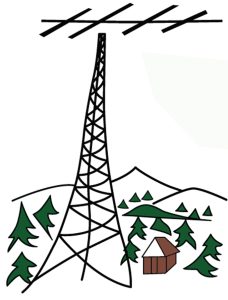
LRRA Past Presidents
“Doc” Steady W1BST
Ellis “Bing” Miller W1IIQ
Charlie Hamlyn K1ELM
Pete Colbath K1OLV
Dave Walsh W1FYX
Johnny Johnson W1JY
John Morrison K1VPO
Hugh Topliff W1LIM
Tom Bates AA1NZ
Bob Ness KB1DLX
Dan Morgan W1UR
Bob Carollo NY1H
Clayton Ferry N1VAU
Shawn Marcotte KC1DNA
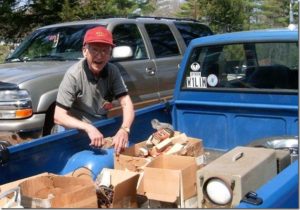
Miscellaneous W1bst and LRRA Memories
Irregular News (photo collage) by de Rick Booth km1g
AG1Z 145.45 MHz Mt Cranmore Repeater Info 1989
Some More Old History
Special Note: Special welcome to new member (and new Ham) Sarah Pelletier/KC1QES. Sarah’s dad John Heaney III/ WA1CIR (SK) was a member of the LRRA during the eighties and can be seen in this photo from a club meeting in 1982.
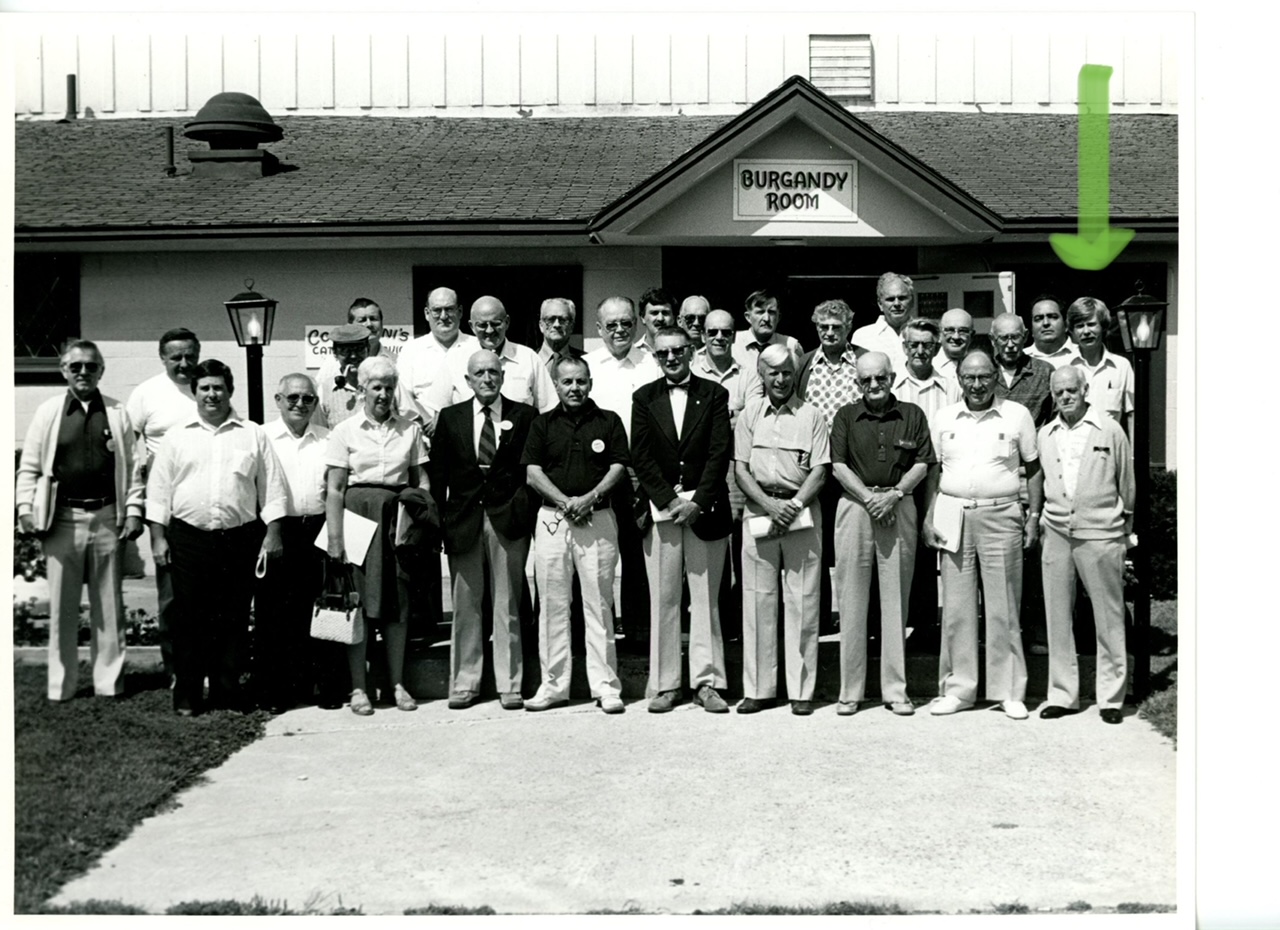
Drone Videos
Check out the Lakes Region Repeater Tower drone video courtesy of KC1HGN Mike Galiberti from Blue Fin Studio. Summer of 2018
Click Below
https://vimeo.com/user67289248/
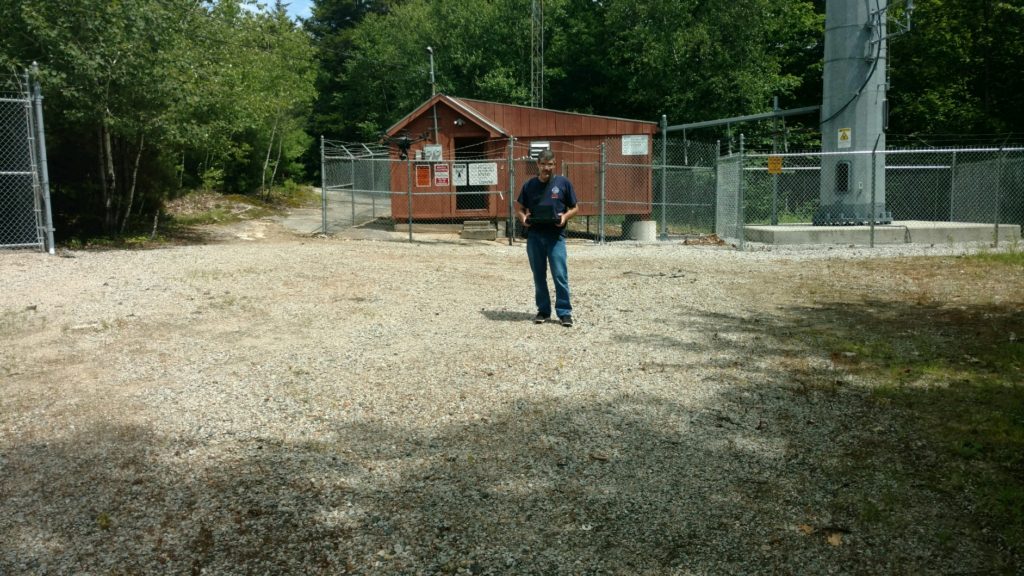
DDDDDDDDDDDDD
Check out our new drone video of the Repeater Site at Bennett Hill!
Courtesy of LRRA member Jayson KB1RFS
https://hwww.dropbox.com/s/vbsotihp53kva3b/W1BST%20Repeater.mp4?dl=0
Mt. Rowe, New Hampshire Drone 11/ 2023
DDDDDDDDDDDDDD
History of Club by Years
The following documents were contributed by Dan Morgan W1UR – History of W1BST and LRRA (2009-1999)
2009
invite to participate in smith river canoe race march 9, 2009
2007
annual fall meeting letter 2007
2006
2005
2004
2003
membership roster march 25 2003
membership roster april 29 2003
2002
membership roster august 8 2002
membership roster april 20, 2002
2001
2000
q-card re FCC grant to access to outdated defense satellites 4/1/2000 – fr Tom Bates
1999
updated membership roster page 1, 1999
updated membership roster page 2, 1999
The following documents were from Joe Fermano W1RRN -History of W1BST and LRRA – (1998-1974)
1998
1997
steak and lobster feed august 8, 1997
lrra financial roster 9-15-1997
available repeater site 4-19- 1997
lrra annual meeting appended 9-20-1997
1996
lrra financial report 5-19-1996
constitution and bylaws september 21, 1996
1995
annual meeting announcement 1995
lrra committee assignments 1995
1994
1993
1992
lrra annual meeting minutes 1992
1991
1990
executive committee meeting minutes 2-17-1990
1988
annual meeting minutes 8-27-1988
executive committee meeting 3-12-1988
executive committee meeting 10-22-1988
application for membership 1988
1986
1985
spring letter meeting may 18, 1985
1984
announcement annual meeting 7-19-1884
1983
dues announcement december 1983
1982
photo taken by wb1adf, greg wa1soo, pete k1olv, ed k1mpx, november 26, 1982
photo flea market may 9, 1981 pheasant ridge country club gilford, nh
1981
photo may 9, 1981 flea market at pheasant ridge country club gilford, nh
photo of channel receiver flea market may 9, 1981 at pheasant ridge country gilford, nh
photo dinner may 9, 1981 flea market at pheasant ridge country club gilford, nh
photo playing the organ flea market pheasant ridge country club gilford, nh
photo wives flea market pheasant ridge country club gilford, nh
photo xyl’s flea market pheasant ridge country club gilford nh
1980
History of W1BST and LRRA
1979
proposal move to new location june 16 1979
1978
1977
1976
letter dear john december 15, 1976
letter dear andy december 15, 1976
handwritten letter dear andy december 15, 1976
handwwritten letter dear john december 15, 1976
1975
1974
draft constitution history 1974
